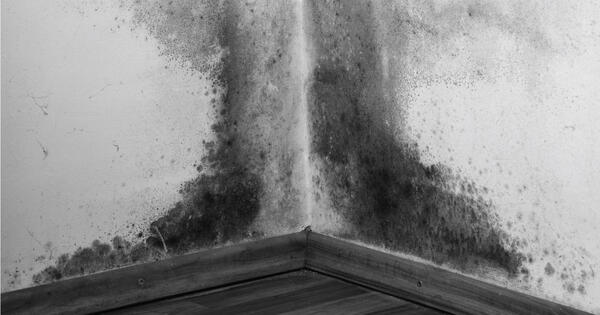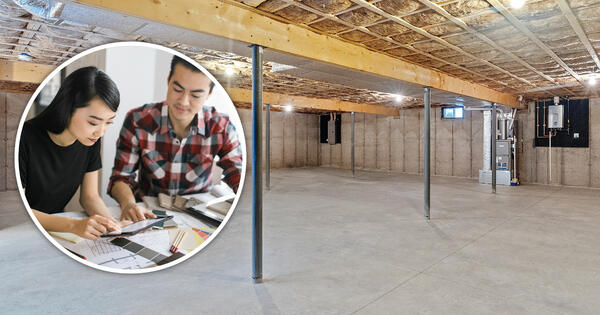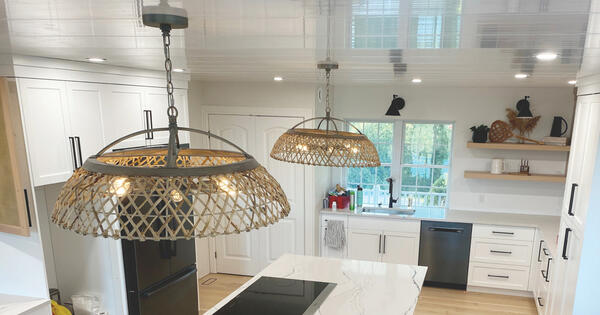When it comes to interior design, ceilings often play a crucial role in shaping the overall atmosphere of a room. Drop ceilings have long been a popular choice — but are they the best option for your space? In this blog post, we explore the downsides of drop ceilings and several drop ceiling alternatives that can add brightness, style, and a unique touch to your space.




Exploring the Problems and Limitations of Drop Ceilings
Some home renovations are cheaper than others, which may allow you to cover multiple projects with a $5,000 budget, but others are larger in scope and will require a bigger investment. Here are 10 home renovation ideas, including a renovation cost breakdown for each project, to help you choose which areas of your home you’d like to improve:
Drop ceilings are a popular option for homes, especially in basements, but they’re not without their drawbacks. In fact, if you choose to install a drop ceiling in your space, here are some areas where you can expect problems and poor performance:
Ceiling height.
Drop ceilings can reduce the height of the room by several, which won’t work in interior spaces with low ceilings. The drop ceiling panels can typically lower the ceiling by several inches, potentially making the room feel smaller and more enclosed.
Aesthetics.
While drop ceilings can be functional, they aren’t always aesthetically pleasing. The grid system used to hold the panels in place can give a somewhat institutional look – just think about how often you’ve seen a drop ceiling in a commercial building -- which may not fit with your home’s interior design. Drop ceilings also offer limited design options compared to traditional ceilings: The ceiling tiles are typically available in standard sizes and limited styles, and customization options are limited.
Ceiling integrity.
Drop ceilings can reduce the integrity of the original ceiling. Since the drop ceiling is suspended below the actual ceiling, access to the original ceiling is restricted. If any issues arise with the original ceiling like leaks or structural problems, it can be challenging to identify and address them quickly.
Sound absorption and noise blocking.
Depending on the quality and type of drop ceiling tiles used, the panels may not adequately block noise transmission between rooms or provide sufficient sound absorption within a space. This can be a problem in areas where sound control is crucial, like home theaters or music rooms.
Energy efficiency.
A drop ceiling can decrease your home’s energy efficiency because it creates additional space between the ceiling and the roof and increases the volume of air that needs to be heated or cooled. This can result in higher energy consumption and reduced efficiency of HVAC systems.
Maintenance and cleaning.
Drop ceilings can be difficult to clean and maintain compared to traditional ceilings because dust and debris can accumulate on the upper surface of the panels. Additionally, tiles can be easily stained, which means they will need to be replaced.
If you’re interested in finding drop ceiling alternatives that have more upsides than downsides, consider one of these five unique ceiling options for your space.

Option 1: Reflective PVC Ceiling Panels for Added Light and Depth
If you want to maximize the amount of light in a room, consider installing reflective, PVC-based panels like Trusscore Wall&CeilingBoard. The pre-finished panels have a light reflectivity value of 0.90, which means that the panels reflect 90% of the light that hit them. This helps maximize natural and fixture lighting in a room, making smaller and darker spaces appear larger, and helping you save on energy consumption. There are other benefits to covering your ceiling with Trusscore Wall&CeilingBoard, too: The panels are scratch, dent, and damage resistant. They’re easy to install and go up four times faster than drywall with no special tools or skills required. They’re 100% moisture and water resistant, so you never have to worry about leaks causing mold and mildew to grow. You can easily remove panels if you need to fish wires through the ceiling or get to the underceiling to find a leak. Plus, our panels have similar sound absorption and sound blocking performance as ½” and 5/8” drywall when installed on wall and ceiling assemblies. It’s the perfect ceiling solution for basements, bathrooms, laundry rooms, and more.
Find a Retailer
Trusscore works with thousands of retailers across North America to bring you the best service and access to our products.

Option 2: Detailed Decorative Ceiling Panels
Decorative ceiling tiles offer a versatile and visually impactful alternative to traditional drop ceilings. These tiles come in a wide range of materials, including tin, PVC, foam, and even real wood. Whether you prefer a vintage, modern, or industrial look, there are numerous designs available to suit your style. With intricate patterns, textures, and finishes, decorative ceiling tiles can add character to any room, but they’re particularly suited for living rooms, dining areas, and bedrooms, where your ceiling can influence the overall design of the space.

Option 3: Classic and Organic Wood Ceiling Panel
Wood ceilings create a warm and inviting atmosphere that’s timeless, organic, and complements a variety of interior design systems, from rustic and traditional to modern and contemporary. Wood ceiling panels come in a wide range of options, allowing you to choose the wood species, finish, and pattern that best suits your style and preferences. You can opt for different types of wood like oak, pine, cedar, or even exotic hardwoods depending on the aesthetic you want to create in your space, whether it’s natural and earthy or refined and polished.

Option 4: Creative and Eye-Catching Stretch Fabric Ceilings
A stretch fabric ceiling is a ceiling system where a fabric membrane made from a lightweight, polyester-based material is stretched tightly across a framework or track system to create a smooth and continuous ceiling surface. It’s a modern and versatile alternative to traditional ceiling finishes, and the fabric is typically fire-rated and available in a variety of colors and textures. The fabric membrane is attached to a perimeter track system that’s fixed to either the walls or the existing ceiling structure. The track system holds the fabric in place and creates tension, which ensures a wrinkle-free and taut appearance across the fabric. Plus, the fabric can be cut and shaped to accommodate light fixtures, vents, or skylights.

Option 5: Open Grid Systems for an Industrial Vibe
An open grid system is an exposed metal grid made from aluminum or steel, and it’s a popular ceiling option for lofts, converted industrial spaces, and minimalist homes that can contribute to a contemporary and urban aesthetic. One significant benefit of an open grid system is its ability to provide easy access to utilities hidden above the ceiling. This is particularly helpful in spaces that require frequent maintenance, repairs, or access to electrical, HVAC, and plumbing systems.






